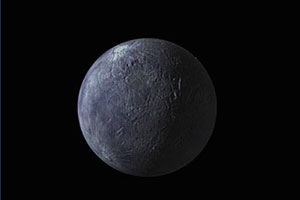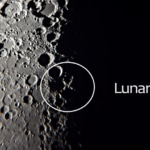Obscure Orcus
Not yet recognized as a dwarf planet, TNO Orcus meets all of the requirements. Learn more about this ominously-named distant object.

Until a few years ago, scientists believed our Solar System contained nine planets. The discovery of n planet-like object called Eris in 2005 changed all that, leading to the creation of a new class of objects called dwarf planets. Now we have eight planets and an ever-growing family of dwarf planets. There are five official dwarf planets, and a large group of other objects believed to be dwarf planets that have not yet been designated as such. One of these is 90482 Orcus, also known as TNO Orcus (TNO is short for Trans Neptunian Object). Learn more:
– Orcus was discovered on February 17, 2004, by a team consisting of Mike Brown from the California Institute of Technology, Chad Trujillo from the Gemini Observatory, and David Rabinowitz from Yale University.
– Orcus is located in the region of space beyond the planet Neptune, known as the scattered disc. The dwarf planet is currently about 48 Astronomical Units from the Sun, though its average distance is 38 AUs. One AU is equal to the distance between the Earth and the Sun — about 92,957,000 miles!
– It takes Orcus approximately 247 years to orbit the sun. Scientists don’t yet know how long it takes it to rotate once on its axis.
– The surface of Orcus is believed to be comprised mainly of rock and ice.
– At about 530 miles in diameter, Orcus is quite small, even compared to other dwarf planets, such as Pluto.
– Orcus, is named after the god of the dead in Etruscan mythology. This is in keeping with a naming convention that objects of a similar size and location to Pluto should be named after gods of the underworld, as Pluto is.
– Orcus has one known moon, called Vanth.
– The average temperature on Orcus is less than -380° F. Brr!
– Orcus is probably too small to have an appreciable atmosphere. Ice on its surface sublimates directly into vapor and escapes into space.
– Orcus, like most dwarf planets, can only be seen through very high-powered telescopes.

Jaime McLeod
Jaime McLeod is a longtime journalist who has written for a wide variety of newspapers, magazines, and websites, including MTV.com. She enjoys the outdoors, growing and eating organic food, and is interested in all aspects of natural wellness.






a lot of planets take a longer time to orbit the sun than the earth
I believe that was Elinin Look it up, there is alot of information and speculation out there on it
I don’t think it could have been the comet Elenin, Beverly. Elenin broke apart last month, and even before that was not visible to the naked eye.
On the night of the Full Moon this month there appeared to be two moons in the night sky? Seen here in Michigan, what was it? Why isn’t anyone talking about it?